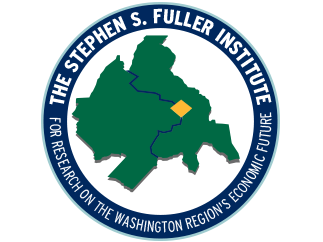From The Washington Post:
Many economists thought 2017 would be a tough year for the nation’s capital and its outlying suburbs.
After all, in one of his first actions, newly elected President Trump imposed a federal hiring freeze as part of his promise to “drain the swamp.” His early budget proposals suggested Republicans would slash federal spending, depriving the region of a key fuel needed to drive its economic engine.
But many of those fears were never realized. Instead, the region’s economy continued to chug along, growing modestly as national and global markets gained strength.
The region’s unemployment rate was steady for the year, holding at 3.8 percent in November. The U.S. Bureau of Economic Research has projected the region’s gross domestic product per capita grew about 0.61 percent, to $73,715, in 2017, and will match that pace in 2018.
Where the region really outperformed economists’ projections was in job growth. An analysis by the Stephen S. Fuller Institute at George Mason University found that the Washington metropolitan area added 56,400 jobs in the first 11 months of 2017, reflecting a continuation of the gains the region experienced in 2015 and 2016. The performance easily bested the forecast of economist Stephen Fuller, the institute’s namesake, who figured the region would add less than 50,000 positions.
“So far, there’s no sense that the Trump administration has cost us much,” Fuller said.
Fuller is projecting the region will add 44,500 jobs in 2018, suggesting a return to a job creation pace that is more typical of the region. The metropolitan area has averaged adding about 44,200 jobs annually during the past 20 years.
Part of the reason is the shifting nature of employment in the Washington area. The region added 16,600 jobs in the professional and business services sector, a generally high-paying job category that includes lawyers, skilled technology professionals and government contractors. Most of those found employment in Northern Virginia.
But the region lost about 2,300 jobs in the federal sector between October 2016 and October 2017, the Bureau of Labor Statistics reported.
Instead, there was a spike in the traditionally lower-paying hospitality sector, where new developments such as the MGM Casino in National Harbor and the District’s Wharf created a flood of service-related opportunities. Suburban Maryland added 6,900 jobs in the sector in the one-year period that ended in October. The District added 4,900 in the same category.
“The strength of the national economy and the fact that we had really strong job growth overshadowed the fact that the jobs we are getting aren’t as valuable as they used to be,” Fuller said.
It’s not clear if the region can continue to add leisure and hospitality jobs at quite the same pace without big projects similar to the casino and the Wharf, he added.
It could be worse. The overall level of federal spending destined for the region in 2018 appears to be changing little from previous years. Budget negotiations for current spending proceeded relatively smoothly despite partisan policy differences, and Congress has so far averted a government shutdown of the sort that created the “sequestration” budget cuts of 2013.
“Despite the rhetoric, we did not see jarring budgetary changes to the extent that they were anticipated,” said Anirban Basu, a regional economist with the Sage Policy Group.
But there are still worries on the horizon.
Federal Reserve plans to raise interest rates in coming months could pump the brakes on the national economy, economists said. And there are concerns about the health of the local commercial real estate market, which has experienced a boom in office construction along the Metrorail lines.
The real estate services firm Newmark Knight Frank reported that office space vacancy rates for the metropolitan region as a whole sat at 16.1 percent in the fourth quarter, which the firm predicted would climb to 16.8 percent by the end of 2019. The rate of office vacancies in Northern Virginia is 19.8 percent.
Developers are counting on the idea that the region’s government contractors will continue to benefit from stable federal spending — and hence keep filling office space — an assumption that could be called into question if Congress decides it needs to reduce spending to offset the cuts in taxes it recently approved.
One economist called the region’s office space oversupply “the biggest bubble on the horizon” for the region’s economy.
“There is more supply but not more absorption, and that is likely to tilt vacancy rates even higher,” Basu said. “If the expectation that federal spending will decline comes true, all of this extra office space creates a liability.”
